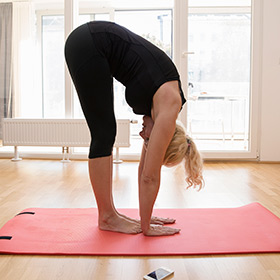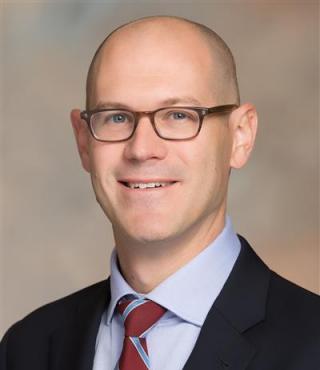If your child is diagnosed with scoliosis, questions will follow. We have answers.
Scoliosis is a condition in which the spine abnormally curves sideways or twists. Most cases are mild, but in some children, the spine deformities continue to get more severe as they grow. Girls are more likely to have scoliosis, but only a small percentage of all children with the condition will need treatment.
It’s natural for parents and patients to have questions about scoliosis after a diagnosis. Gregory A. Mencio, M.D., and Jeffrey Martus, M.D., both pediatric orthopaedic surgeons at Monroe Carell Jr. Children’s Hospital at Vanderbilt; and Byron Stephens II, M.D., a spine surgeon with Vanderbilt Spine Center, answer some common questions.
Can I tell if my child has scoliosis?
Possibly. Slight curves in the spine are relatively common, but hard to detect. The good news is that small curves often do not progress and do not pose any long-term health risks. More pronounced curves are often associated with asymmetry of the trunk, rib cage, shoulder blades. There may be differences in shoulder height or waist/hip asymmetry.
Curves most commonly first appear around adolescence or about age 10. It can also appear in younger children, in which case it is referred to as “early onset.” Scoliosis is more common in girls than boys and it can run in families.
One in three patients with idiopathic scoliosis (the most common type) have a family history of scoliosis. First-degree relatives (parent, sibling or child) of a person with scoliosis have an 11 percent chance of also developing a curved spine.
Can my child play sports if they have scoliosis? Are certain activities off-limits?
Patients with scoliosis can play sports! The spine may be curved, but it is as strong as a spine without scoliosis. Furthermore, staying lean and strengthening core muscles through sports are good for scoliosis patients. Some patients who have had surgery have gone on to compete in sports at high levels.
What are the most common treatment options for scoliosis in children?
1. Observation
Your pediatrician or orthopaedic specialist will follow your child through regular checkups to ensure the curve is not getting worse.
2. Bracing
An orthopaedist or orthopaedic surgeon may have your child wear a brace for moderate spinal curvature. The brace prevents a curve from getting worse while your child is still growing.
3. Surgery
If your child’s scoliosis is severe or getting worse, surgery can help to correct or stabilize the curve.
What to think about before scoliosis treatment
In younger children, casting may be used as an alternative to bracing. For large curves that are not responsive to bracing, surgery to implant rods that can be lengthened (“growing rods”) may be considered to allow continued trunk growth while controlling the spinal deformity until adequate growth has occurred to allow formal surgical correction.
How effective is scoliosis surgery as a long-term correction?
Surgery is effective in correcting existing spinal deformity, restoring trunk balance and preventing future progression of the curve(s).
What is the latest research on scoliosis treatment?
The cause of scoliosis is unknown, but genetic markers have been identified. However, there is no known method of prevention. Some recent research suggests that it’s important to take Vitamin D supplements to prevent scoliosis from getting worse; Stephens encourages his patients with idiopathic scoliosis to take a vitamin D supplement.
Bracing has been shown to be an effective method to prevent spinal curves from getting worse, and avoid the need for surgery in approximately 70 percent of cases. Braces need to be worn a minimum of 16-18 hours/day to be effective, which is considered “part-time wear.”
Newer research has been geared to finding methods to predict which curves are likely to progress, despite brace treatment. In this case, a surgical procedure called vertebral tethering might be performed to halt progression early, before any significant deformity develops.
Gregory A. Mencio, M.D., is professor of Orthopaedics and the chief of Pediatric Orthopaedics at Monroe Carell Jr. Children’s Hospital at Vanderbilt. Jeffrey E. Martus, M.D., is associate professor of Orthopaedics with a patient care emphasis in Scoliosis and Spinal Deformities. Byron F. Stephens II., M.D., is assistant professor of Orthopaedics and practices at the Vanderbilt Spine Center.


The Vanderbilt Spine Center treats patients from across the Southeast for back pain, sciatica, whiplash and other conditions of the spine, offering a full range of treatments including non-surgical options. If surgery is necessary, the Vanderbilt Spine Center team provides an extraordinary level of experience and expertise for each patient’s needs. For more information, click here or call 615-875-5100.


